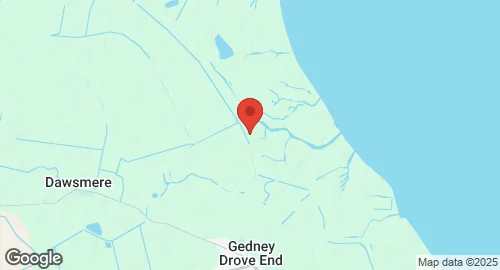Holbeach Air Weapons Range
Summary
| Operating Country | 🇬🇧 United Kingdom |
| Location | 🇬🇧 United Kingdom |
| Status | ◉ Active |
| Usage | Military only |
| Year built | 1926 |
| Operating Organization | Defence Infrastructure Organisation |
| Units |
|
Description
Holbeach Air Weapons Range is an active military air weapons range located between Boston and King's Lynn in Lincolnshire, eastern England. It was established in 1926 as an air gunnery range attached to RAF Sutton Bridge, initially known as 'Holbeach Air Gunnery and Bombing Range' or 'Holbeach Marsh Range'. In the late 1950s, it was renamed RAF Holbeach Bombing Range and became parented to RAF Marham under RAF Strike Command. On 1 April 2006, its administration transferred to the Ministry of Defence—Defence Training Estate East, now known as Defence Infrastructure Organisation East (DIO East), which is responsible for its infrastructure. RAF Air Command controls the core RAF station site, and RAF air traffic control personnel staff the control tower.
The range covers an area of 3,875 hectares, including intertidal mudflats and salt marsh. It provides facilities for RAF and NATO-allied aircraft to practice dropping bombs and firing aircraft weapons, including pre-deployment training and night bombing operations since 1993. The range features eight static targets, including retired merchant ships beached on The Wash. Observation towers are used to calculate the accuracy of ordnance. It includes a helicopter landing pad and a range headquarters building. The military Danger Area is identified by the code WRDA D207/II or ICAO code EG D207, with a danger altitude typically up to twenty-three thousand feet AMSL.
Historically, the range has been used by various British and foreign military aircraft, from biplanes like the Armstrong Whitworth Siskin to jet aircraft such as the Gloster Meteor, English Electric Canberra, F-100D Super Sabre, Blackburn Buccaneer, McDonnell Douglas F-4 Phantom II, General Dynamics F-111 Aardvark, Harrier jump jet, SEPECAT Jaguar, and Panavia Tornado. Current aircraft types utilizing the range include the Eurofighter Typhoon, Lockheed Martin F-35B Lightning II (No. 617 Squadron RAF), USAF McDonnell Douglas F-15 Eagle/F-15E Strike Eagle (48th Fighter Wing), BAE Hawk trainer, AgustaWestland Apache AH1 helicopters, USAF Bell Boeing CV-22B Osprey (7th Special Operations Squadron), USAF Lockheed Martin F-35A Lightning II (495th Fighter Squadron), Boeing Chinook, AgustaWestland AW159 Wildcat, AugustaWestland Merlin, and Aerospatiale Puma HC helicopters. It also hosts forward air control (FAC) and joint terminal attack controller (JTAC) exercises.
Holbeach Air Weapons Range also has strafing courts with acoustic sensor scoring systems for aircraft strafing runs, which measure projectile position, rounds per minute, and angles of attack. The range has experienced several aircraft incidents, including crashes attributed to overshooting targets, stalling, structural failure, and ricochets from practice ammunition, resulting in fatalities in 1952, 1953, 1957, 1960, and 1983. In 2006, a Panavia Tornado GR4A crashed due to a bird strike, with both aircrew ejecting safely.
